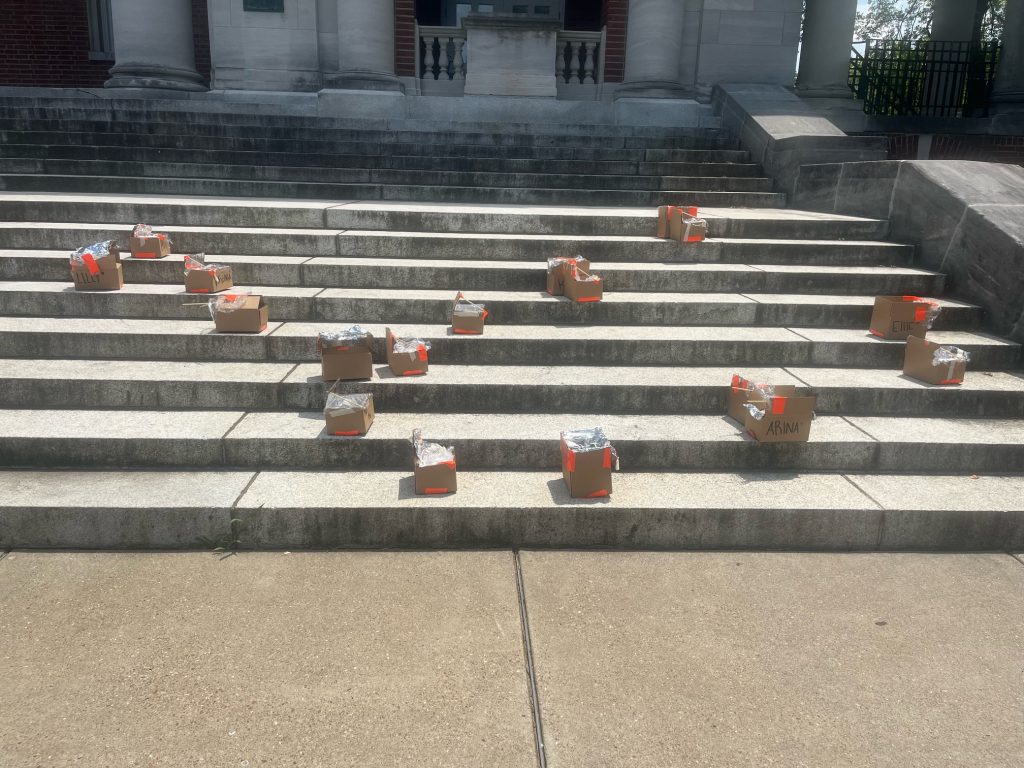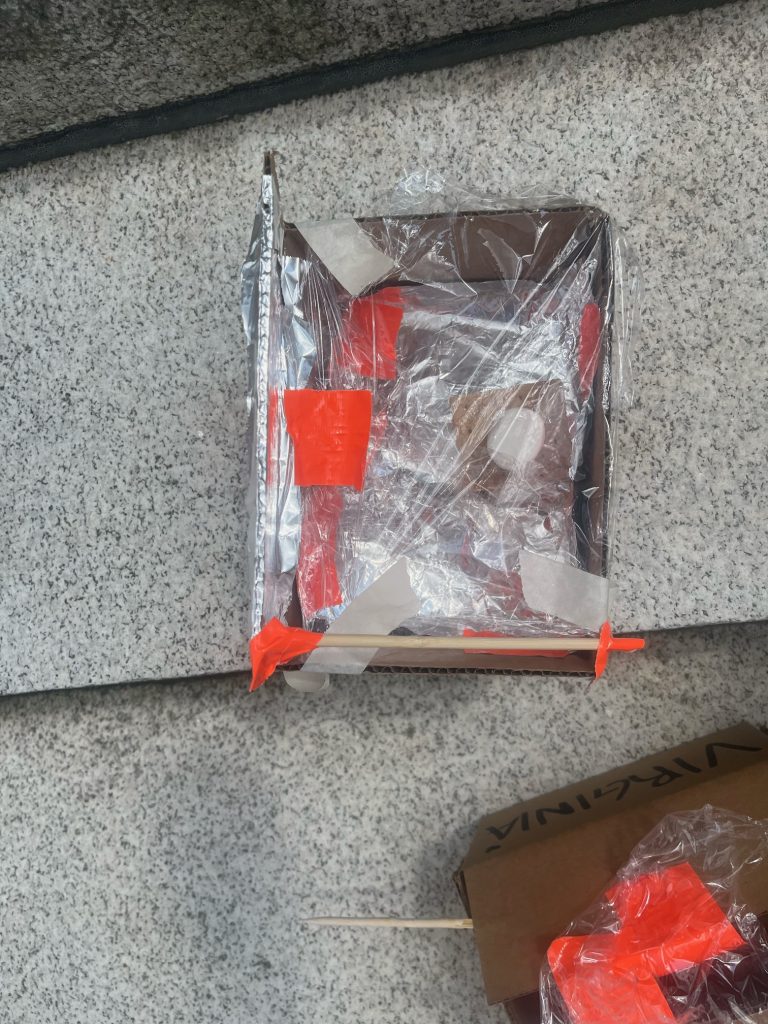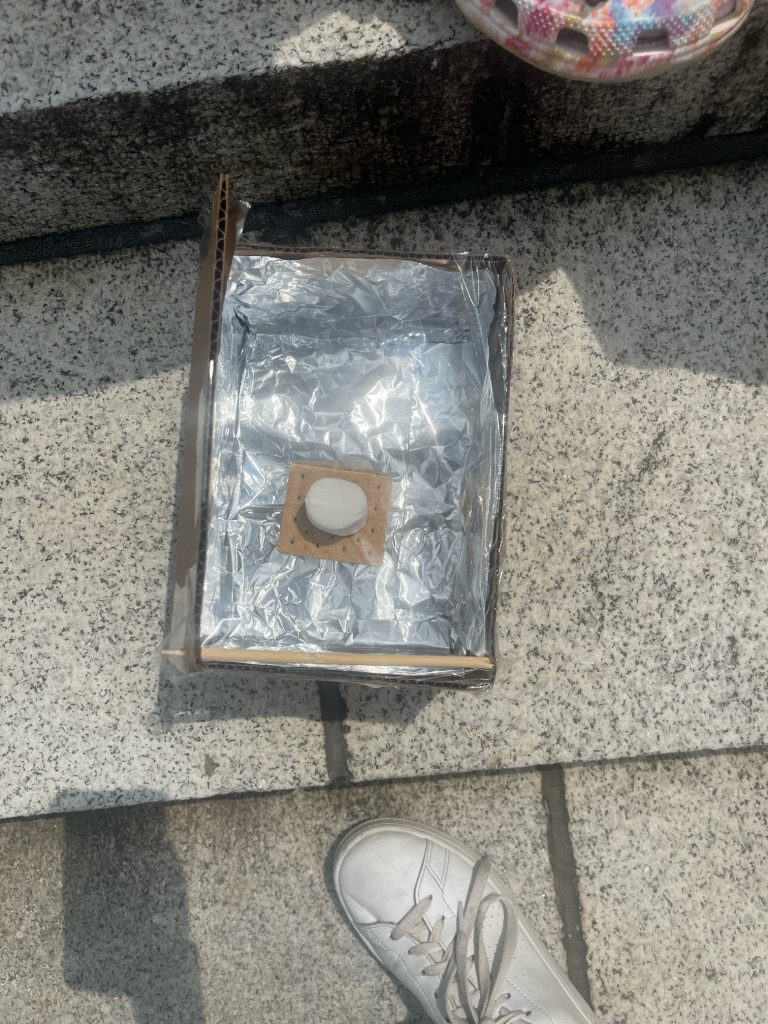Dear SAVY Families,
I can’t believe our time together at SAVY Summer 2024 Session Two: Sun and Shadow is complete! What an amazing week learning about how the sun makes our day. While shadows were a familiar concept for the SAVY scientists coming into this week, I believe that all of the scientists are more aware of the world around them and how the sun can have a major effect on their day.
We started the day repeating the six steps of the scientific process to learn about The Greenhouse Effect. We started by looking at pictures of real greenhouses and discussing our experiences with greenhouses. The students who recognized what a greenhouse was were able to share that it is always warmer inside the greenhouse and that greenhouses are used to safely grow plants and vegetables. To model a greenhouse and The Greenhouse Effect, the scientists conducted an experiment using glass jars and thermometers. First, our scientists wrote a hypothesis about whether the temperature would be warmer inside the jar or outside of the jar. Then, the scientists set one thermometer inside the glass jar and one outside the glass jar. Over the course of about 20 minutes, the scientists checked the reading on the thermometers. The scientists noted that the temperature started out being warmer outside of the jar, but the temperature rapidly increased inside the jar. After the experiment was over, we had a class discussion and created a diagram to show how the glass jar models a greenhouse and Earth’s Greenhouse Effect. We learned about the layers of Earth’s atmosphere and about how these gasses work to keep Earth warm, just like a greenhouse!
Next, we discussed how too many greenhouse gasses can turn harmful to the Earth. Scientists named inventions that humans have created to make life easier, such as lightbulbs, cars, and airplanes. We noted that while all of these are conveniences, they also all use energy, which releases heat. Scientists were quick to note that if there is too much heat on the Earth, it is possible that the temperature of the Earth could rise. We defined the rising of Earth’s temperature as global warming and came up with the harmful effects of global warming. Scientists made posters to show how they could do their part in slowing down the heating of the Earth.
After lunch, we started on our solar ovens. The scientists have been asking about this all week, so they were thrilled to get started. Our scientists were given their materials and tasked with making an oven capable of heating their marshmallows. The solar oven uses concepts of the sun, rays of sunshine, light, shadows, and the Greenhouse Effect. Scientists were given a box, tin foil, and plastic wrap, and tried to create their ovens without guidance. After some practice and a little guidance, the scientists were given another box and a tutorial on how to make an effective solar oven. We set the ovens outside in the sun for about 30 minutes, and most scientists came back to a soft marshmallow. It was so fun to add our chocolate and enjoy a snack on a warm summer afternoon. The scientists discussed which design worked better, their initial design, or the design provided by NASA, and why. Once again, I will not be surprised if many scientists ask to repeat this activity at home, as most scientists named this activity as their favorite from the week. https://climatekids.nasa.gov/smores/
We ended the day with a fun activity of shadow play. Our scientists know that shadows are made by blocking out light, so they enjoyed the challenge of shadow play. Using a flashlight, a dark room, and their hands, I shouted out some animal names that the scientists had to try and create. Some of the animals were challenging to make, even after watching a tutorial. This activity was a challenging, but fun, way to end our time together. We also tried to complete our shadow measurement activity from Thursday, but, once again, a large cloud prohibited us from seeing our shadows. We all got a good laugh out of this!
Questions for today:
-
What is The Greenhouse Effect? How did your jar experiment model The Greenhouse Effect?
-
What is Earth’s atmosphere? How does the atmosphere protect the Earth?
-
What is global warming? What are some things we can do to lessen the effect of global warming?
-
How did you begin to design your solar oven? Were you surprised that the official design was a lot different than your design?
-
How did you figure out how to make the animals Ms. Gruchot suggested with your hands? Was this difficult to make an accurate shadow?
-
What did you learn about the sun this week? What did you learn about shadows? What did you learn about change?
-
How did SAVY allow you to be a scientist this week?
Thank you so much for allowing your child to attend SAVY this week. It was an honor for me to get to spend this week learning with and from each of the SAVY scientists. I hope to see each of them in a future SAVY class!
Sincerely,
Ms. Gruchot


